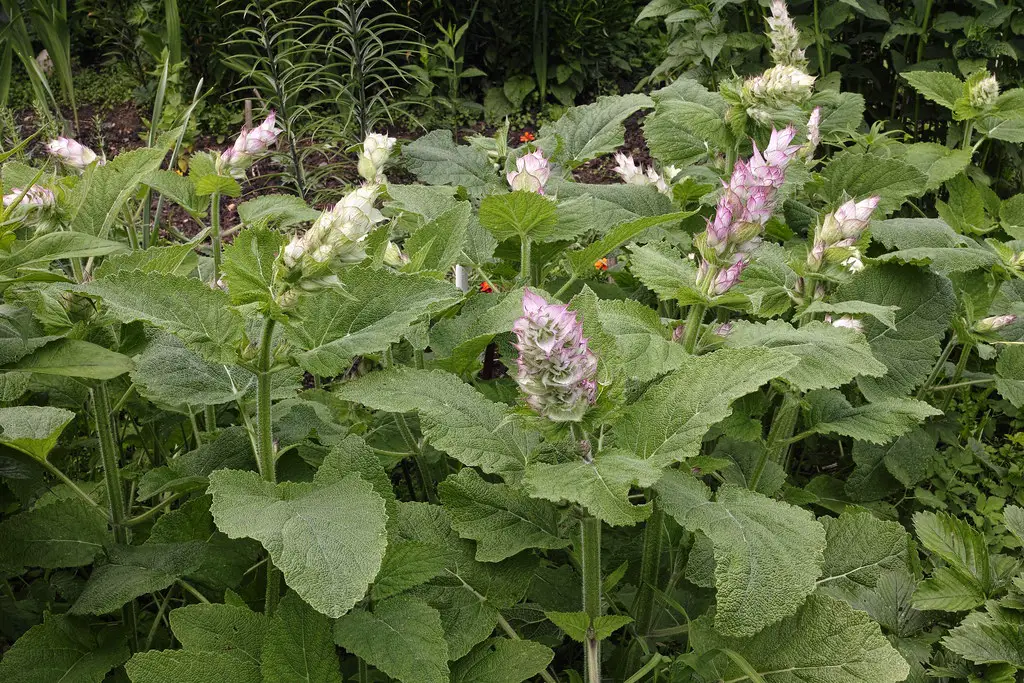Sage is a versatile and aromatic herb that has long been associated with culinary, medicinal, and ornamental uses. With over 900 species in the Salvia genus, sage offers a variety of flavors and appearances, from common sage (Salvia officinalis) with its fuzzy, silvery-green leaves, to vibrant ornamental varieties like the pineapple sage.
Native to the Mediterranean region, sage is a staple in many cuisines and is known for its earthy and slightly peppery taste. Besides its culinary uses, sage has been employed in traditional medicine for its anti-inflammatory, antimicrobial, and cognitive-enhancing properties.
As a garden plant, sage is appreciated for its hardy nature, beautiful flowers, and fragrant foliage. Its attractive appearance and pleasant aroma make it a favorite among gardeners who wish to add both aesthetics and functionality to their gardens.
| Aspect | Details |
|---|---|
| Common Names | Sage, Common Sage, Garden Sage |
| Botanical Name | Salvia officinalis |
| Family | Lamiaceae |
| Plant Type | Perennial herb |
| Mature Size | 18-30 inches tall |
| Sun Exposure | Full sun |
| Soil Type | Well-draining, loamy soil |
| Hardiness Zones | 5-9 |
| Native Area | Mediterranean region |
Sage Plant Care
Caring for sage plants is relatively straightforward, making it suitable for gardeners of all skill levels. Sage thrives in a full sun location with well-draining soil and doesn’t require much water, making it quite drought-tolerant. Its preference for low fertility soil and minimal care needs makes sage an excellent choice for xeriscaping.
Although sage is tolerant of various conditions, it’s important to avoid overwatering, as this can lead to root rot. Pruning to remove old or dead growth and encourage air circulation can keep the plant healthy and bushy. With proper care, sage can become a long-lasting fixture in the garden, providing aromatic leaves and beautiful blooms for years to come.
Light Requirement for Sage Plant
Sage prefers a position in full sun. While it can tolerate some shade, too little sunlight may lead to weak growth and decreased flavor in the leaves. Ensuring at least 6-8 hours of direct sunlight daily will promote healthy growth and maximize the plant’s aromatic qualities.
Soil Requirements for Sage Plant
Well-draining, loamy soil with a pH range of 6.0 to 7.0 is ideal for sage. Heavy clay soils should be avoided, as they may retain too much moisture and lead to root rot. Amending the soil with compost or sand can improve drainage if needed.
Water Requirements for Sage Plant
Water sage sparingly, as it is quite drought-tolerant. Allow the soil to dry out between waterings to avoid overwatering. During the growing season, a deep, thorough watering once a week is generally sufficient.
Temperature and Humidity
Sage is hardy in USDA zones 5-9 and prefers a temperate climate. It can withstand cold temperatures but will benefit from mulching in winter in colder regions. Humidity is generally not a concern, but good air circulation can prevent fungal issues.
Fertilizer
Fertilizing sage is generally unnecessary, and excessive fertilizer can lead to lush but less flavorful growth. If desired, a light application of balanced, slow-release fertilizer in the spring can be used.
Pruning Sage Plant
Regular pruning encourages bushy growth and air circulation. Remove dead or woody growth in early spring, and lightly trim the plant after flowering to maintain its shape.
Propagating Sage Plant
Sage can be propagated through cuttings, division, or layering. Taking stem cuttings in spring or early summer and rooting them in well-draining soil or water is a common method.
How To Grow Sage Plant From Seed
Sow sage seeds indoors 6-8 weeks before the last frost or directly outdoors in spring. Provide a sunny location and well-draining soil. Germination can be slow, so patience is needed.
Common Pests & Plant Diseases
Aphids
Treat with insecticidal soap or neem oil.
Powdery Mildew
Increase air circulation and avoid overhead watering.
Common Problems With Sage Plant
Yellowing Leaves
Overwatering or poor drainage can cause yellowing leaves. Adjust watering and improve soil drainage.
Leggy Growth
Insufficient sunlight may lead to weak, leggy growth. Increase sun exposure.
Woody Stems
Older plants can become woody and less productive. Regular pruning or replacing the plant every 3-4 years is advised.
Pro Tips
- Plant sage near cabbage or carrots to deter pests.
- Harvest sage leaves in the morning for the best flavor.
- Sage pairs well with other Mediterranean herbs like rosemary and thyme in the garden.
- Avoid heavy pruning in the fall to ensure winter survival.




